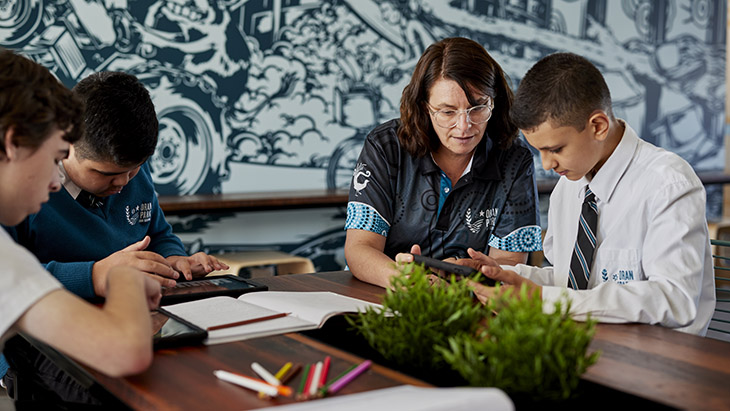Evidence-based strategies for planning and organisation
Teach academic skills
Teach organisation strategies explicitly
Tools such as colour-coded books or folders, planners or checklists can be used to help students keep track of notes, books, homework, assignments and key dates. If lockers are used in your setting, our locker checklist may be helpful.
Teach note-taking skills
Students can be taught note-taking and summarising skills during a lesson through simple and direct instructions. Prompts and redirection may help students to take accurate notes. This support can be reduced when they can record information and write notes clearly and concisely without help.
Teach students how to plan and organise their work
It may be helpful to teach students how to use a diary or planner and to give them prompts when they need to write things down. Teachers can check and sign diaries or planners.
For example, teach students to (i) write tasks to be completed on the left side of the planner, and tasks to be handed in on the right, (ii) divide their work into “to do”, “doing” and “done” groups, or (iii) write a checklist in their diary each day so they can tick off completed items and write in incomplete items for the next day.
Teach students how to break a task down
Some students may need to be shown how to break down projects and study into smaller tasks, and to manage their time. This may include teaching them how to define large tasks and the smaller subtasks, and scheduling these tasks so that they can complete the task by a set time.
Provide tools to help students get started on a task
Some students may find it difficult to plan how to respond to a given task, and therefore may find getting started on the task challenging. Visual storyboards may help some students plan out a story, and writing a list of key points for an assignment may help some students organise their thoughts.
Some students may respond well to discussion around the different directions they can take a task in, while others may find problem solving or “key questions to ask myself” helpful.
Considering a student’s learning profile and the nature of the activity can help identify which supports may be best suited to a student’s strengths and abilities.

Structure classes
Create a consistent daily routine
Rules and routines help a student know what is planned for the day so that they know what to do if they have missed instructions. Consider using a timer or clock to help students learn to manage their time and routines.
Routines that include specific times for students to organise their materials (for example, tidy up their belongings) and activities (for example, write in diary their homework or checklist of things to take home) may be particularly helpful.
Support students to self-manage
Set simple and clear goals
Consider letting students and their families choose goals. These could be short statements that describe positive and achievable behaviours that students understand. Check that the goals set include behaviours that can be seen and counted. For example, a goal might be handing in four items within a set time. Access our self-monitoring form.
Teach self-instruction skills
Consider guiding students to problem solve so they can persist with school work instead of getting frustrated. For example, they can follow these steps mentally or think out loud: “What is the problem?”, “What are my options?”, “I think this is the best option”, “Am I following my plan?” and “How did I do it?”
Guide students to self-evaluate
Students can be taught to rate their choices and outcomes, and write down what has helped or stopped them from achieving their goals. Help students be more accurate in their evaluations by recording your own observations.
Teach time-management skills
Help students to manage their own time. Show them how to organise after school commitments using an evening schedule.
Consider how you communicate
Simplify instructions and learning
Consider breaking down big tasks into smaller ones. For example, give step-by-step written and verbal instructions with visual supports (pictures). Other strategies include providing opportunities for the student to respond, using activity sequencing, and allowing choice. It is helpful to check their understanding before moving on to the next step or activity. For example, some students may like to demonstrate their understanding by repeating instructions or answering questions.
Model tasks and the underlying strategies or thinking
Students may learn more effectively if shown how to do a task. Consider talking out loud to demonstrate the strategies you use to problem solve when working on the task.